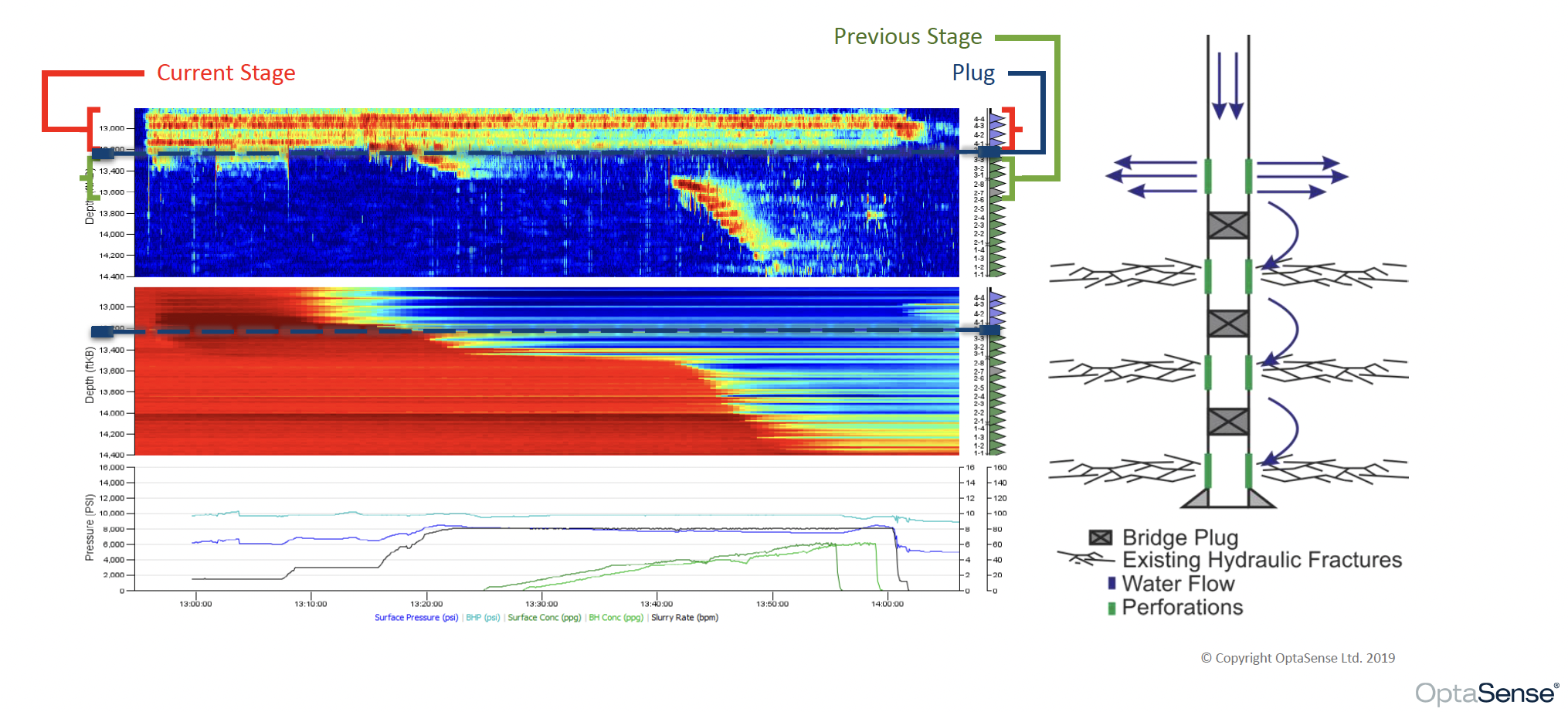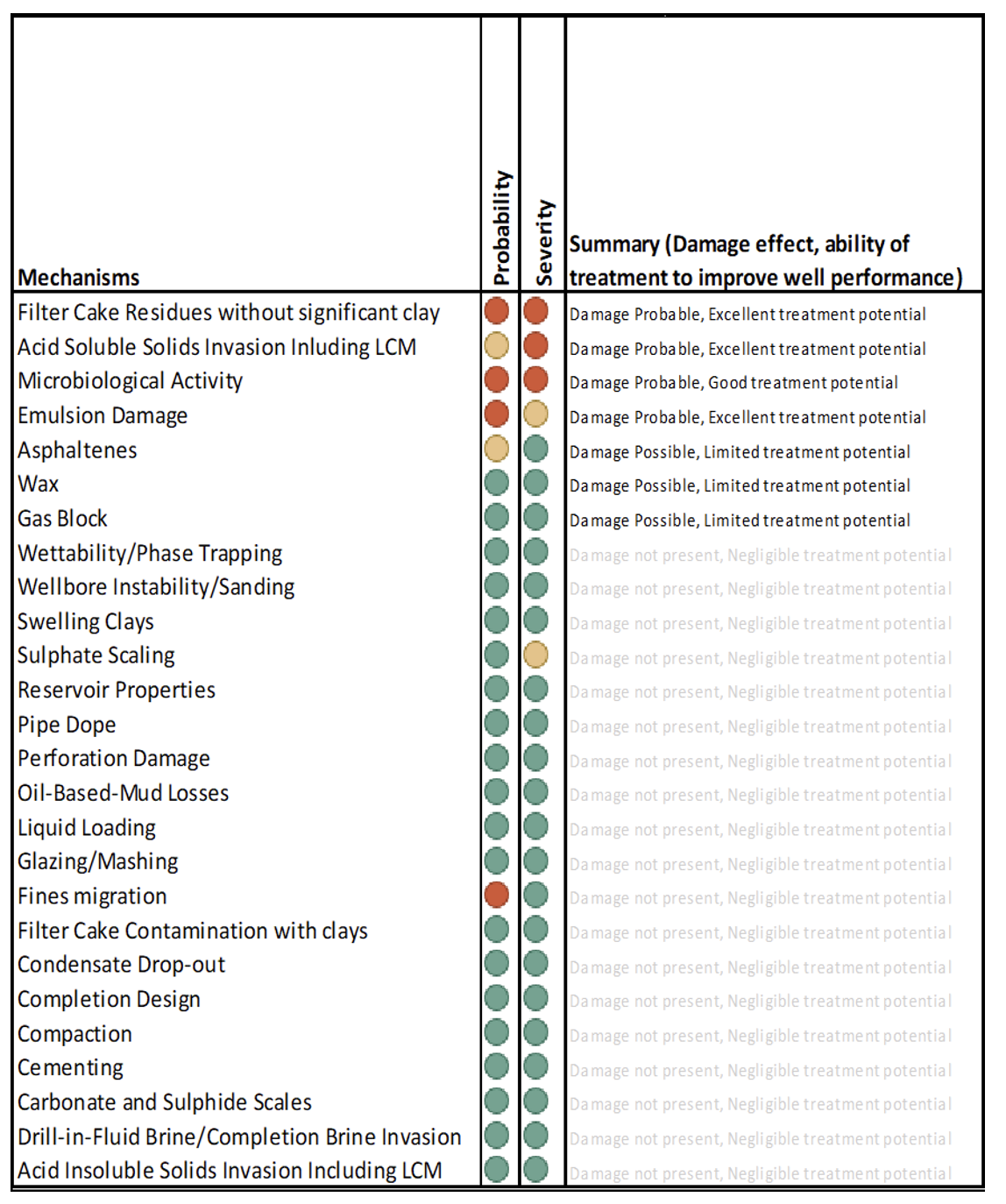As operators look to improve cash flow, two of their top issues are proper well spacing—drilling no more wells than are necessary to produce the field—and quickly solving downhole issues to reduce expenses and maximize production.
Two service companies offer different approaches for E&Ps to optimize well spacing, performance and fracking.
One, Luna OptaSense, uses networks of fiber optics to “feel” measurements including temperature, strain and pressure through its distributed acoustic sensing (DAS) systems.
And oilfield technology giant Baker Hughes’s recently developed the SCIRE system, which centralizes a wide range of cross-discipline data that enables all members of an E&P’s team to see the big picture downhole.
Fiber optics as sensors
In completions, accurate stage design depends on properly understanding the formation’s fracture geometry—that’s how producers know exactly which areas along the horizontals are being fractured, said Andres Chavarria, technical director of Luna OptaSense.
If fractures from child wells begin to interact with those of nearby parents, producers can decide whether spacing is too close, allowing them to plan fewer wells — saving costs while gaining the same production.
Luna OptaSense uses a network of wireline or permanently installed fiber optic cables to collect downhole data, which informs producers about the trajectory of new fractures and how they affect existing fractures from parent wells. A single fiber strand can measure thousands of data points across an area of up to 100 km.
“We turn each point in that fiber into a virtual sensor that is sensitive to strain, seismic, temperature, pressure, making it a very versatile tool depending on the physical phenomena you want to study,” Chavarria said.
To gather the data, a controller sends thousands of pulses of laser light into the fiber every second. Carrying a characteristic signature of the fiber optic’s glass, some of the light returns to the sending unit from each section, modified by local strain or vibrations.
OptaSense’s DAS is a real-time sensing system that can perform both current and predictive diagnostics. The company has used DAS in unconventionals since 2014, continuously improving it with the growing database of historical information.
“What’s exciting about this is, whether you have the fiber in the injector well or in a monitoring well, as this fracture starts to develop, there are different signals that we can detect from it,” Chavarria said. “As the fractures start to grow, all the fibers in the neighboring well start to feel a tension or compression. That will be the fracture that is opening, and that strain response is something that we’re very sensitive to from this optical interrogator unit.”
For example, the system can detect strain signals at the nano level, or one part per billion.
“Around the fracture tip you will be extending the fibers, and surrounding locations will sense the stress shadow as seen as a compression,” Chavarria said. “That’s the strain front that we’re monitoring for. More importantly, this strain is a function of the reservoir geomechanics in the context of the injection that is taking place.”
Gathering that data gives a producer a more intimate picture of the fracs. The data can answer questions such as which stages generated fracs and can help solve for those that failed.
Whether the missed frac resulted from an operational problem with plugs, cement, injection rate or the spacing of stages, operators can adjust. The data allows drillers to fine-tune changes in proppant concentrations or in their perf count.
Gathered in real-time, the information can be used to adapt procedures on the current well and/or for future drilling in the same formation. If new fracs grow large enough to interfere with existing production, Chavarria said he has seen operators reduce the number of planned wells.

Connecting the reservoir dots
Drilling and completing any well involves many moving parts and tasks, all of which must be correct independently while also working together as a whole. Because responsibility is typically spreads across several departments, getting the big picture of downhole issues has often been difficult.
Groups see through their own lens — too rarely consulting other “silos” to determine the best overall solution.
Enter Baker Hughes and its SCIRE system.
SCIRE aggregates well data and gets all parties to collaborate on solutions. Baker Hughes developed SCIRE (pronounced “Sheerah”), which in Latin means to know. It’s also an acronym for Sub-surface and Completion Impairment and Remediation Evaluation.
Its origins came about as Baker Hughes sought to automate well impairment analysis processes and collect them into a unified system, said the system’s primary developer, Christopher Harper. Harper is Baker Hughes’ global subject matter expert on production chemistry and formation damage—reservoir technical services.
The process examines damage from disparate sources such as “drilling fluid incompatibility with mineralogy, mechanical invasion of bridging solids, microbiological interactions during production that could form biofilms” and others, he said.
After some analysis, it became apparent that those issues were more varied “than any one discipline could address,” he said.
Breaking down silos and encouraging teamwork appeared to be the way to correctly analyze formation damage.
In using SCIRE to unify data in a way that every department could see the whole picture, Harper observed that every team member came away with a broadened knowledge base. That, in turn, expanded their understanding of the larger picture of the well, the formation and all the formerly sequestered parts.
SCIRE gathers data and diagnoses “26 types of mechanisms across the full range, from mechanical damage through to microbiological damage, crossing all the geochemistry and completion architecture” areas between, Harper said.
The system is evolving toward full automation, although inputs are currently questionnaire-based. The system can be queried for data on topics including reservoir properties, production/injection history or forecast, completion design, fluid properties and composition.
Once gathered, the system assimilates the data and diagnoses the probability and severity associated with potential impairment mechanisms.
The data can be used predictively for a future well in the same formation, or diagnostically, to make adjustments in an active well.
The concept began to take shape in a 2014 North Sea injection well case where the client had a preconceived idea of what was wrong. This came about “because there were certain datasets that had been ignored,” Harper noted.

In the field
In one case study, a North Sea operator’s long horizontal production well with standalone screens produced poorly from the start. It also saw production decline further due to injection water breakthroughs. A series of studies failed to pinpoint the problems.
By examining SCIRE’s aggregated data, the Baker Hughes team suggested specific testing that revealed the issues’ true sources. They then recommended updates in stimulation procedures, to which the well responded positively.
Recommended Reading
Green Swan Seeks US Financing for Global Decarbonization Projects
2024-02-21 - Green Swan, an investment platform seeking to provide capital to countries signed on to the Paris Agreement, is courting U.S. investors to fund decarbonization projects in countries including Iran and Venezuela, its executives told Hart Energy.
Air Products Sees $15B Hydrogen, Energy Transition Project Backlog
2024-02-07 - Pennsylvania-headquartered Air Products has eight hydrogen projects underway and is targeting an IRR of more than 10%.
Humble Midstream II, Quantum Capital Form Partnership for Infrastructure Projects
2024-01-30 - Humble Midstream II Partners and Quantum Capital Group’s partnership will promote a focus on energy transition infrastructure.
SunPower Begins Search for New CEO
2024-02-27 - Former CEO Peter Faricy departed SunPower Corp. on Feb. 26, according to the company.
TechnipFMC Eyes $30B in Subsea Orders by 2025
2024-02-23 - TechnipFMC is capitalizing on an industry shift in spending to offshore projects from land projects.





